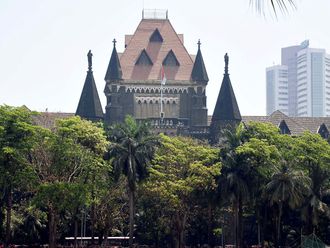
Dubai
Economic growth across the Middle East, North Africa, Afghanistan and Pakistan (MENAP) region is projected to remain subdued during 2017 and 2018, according to the World Economic Outlook of the International Fund (IMF).
“Prolonged slump in oil prices are weighing on the economic growth outlook across the Middle East. Oil exporters are hard hit with long term implications for their growth outlook,” said Gian Maria Milesi-Ferretti, Deputy Director of Research Department of the IMF during a webcast from Washington.
The IMF’s 2017-18 forecast is broadly unchanged relative to the July and April 2017 World Economic Outlook updates.
After a better than expected performance with five per cent growth in 2016, the economies of countries in the Middle East and North Africa as well as Pakistan and Afghanistan will subside to just 2.6 per cent growth this year, the IMF WEO update said.
The IMF forecast for 2018 showed the regional GDP growth rebounding to 3.3 per cent, largely driven by turnaround in key regional economies such as the UAE, Saudi Arabia and Kuwait.
While Saudi Arabia’s real GDP growth is forecast to be flat at 0.1 per cent, down from 1.7 per cent last year. Next year Saudi’s GDP is likely to see a marginal improvement largely driven by non-oil sector growth.
“Fuel exporters are particularly hard hit by the protracted adjustment to lower commodity revenues,” the IMF said in its World Economic Outlook for October.
“Commodity prices have fallen dramatically in recent years, with food and metal products losing about 20 per cent in value since 2012—13, and oil prices halving over the past three years. Commodity prices have not rebounded in the past three years to their peak levels, and medium-term forecasts suggest that they are unlikely to do so,” the IMF report said.
Saudi Arabia’s real GDP growth is expected to be close to zero (0.1 per cent) as oil GDP declines in line with Saudi Arabia’s commitments under the Opec agreement. However, the IMF expects to strengthen over the medium-term as structural reforms are implemented. Non-oil growth in Saudi is projected to pick up to 1.7 per cent in 2017 with further uptick in 2018 with a projected overall GDP growth of 1.1 per cent.
The UAE’s economic growth, which faced a persistent slowdown from 2015, is expected to bounce back in 2018, according to the IMF. The IMF has projected a 1.3 per cent growth in the UAE’s real GDP in 2017, which it expects to surge to 3.4 per cent in 2018.
“Economic activity is expected to strengthen gradually in the coming years with firming oil prices and other global indicators, and an easing pace of fiscal consolidation,” the IMF Executive Board said in a statement after concluding its Article IV Consultation with the UAE.
The IMF has projected the non-oil growth to rise to 3.3 per cent in 2017 from 2.7 per cent in 2016, reflecting increased domestic public investment and a pickup in global trade. Over the medium term, non-oil growth is expected to remain above 3 per cent, supported by accelerating investment in the run up to the Expo 2020. The planned VAT introduction in 2018 is not expected to have a significant adverse impact on growth.
Kuwait’s economy is projected to shrink the most among oil exporters, by 2.1 per cent, In all, the growth of MENA oil exporters Iran, Iraq, Algeria and the six Gulf Cooperation Council (GCC) states is forecast to end this year at 1.7 per cent from 5.6 per cent in 2016.
MENA growth as a whole is projected to more than halve in 2017, from 5.1 per cent to 2.2 per cent. The IMF has projected the price of oil to average $50.3 a barrel in 2017, higher than the previous year, but will remain in the 50s until 2022.
The IMF welcomed Saudi Arabia’s reform package, although it has already sent the kingdom’s economy into the red in the first two quarters of the year. The IMF believes that Saudi Arabia’s bold reforms programme under Vision 2030 is moving in the right direction and is supported by a strong governance and monitoring system, according to a recent staff discussion paper from the International Monetary Fund (IMF).
“The reform plans aim to transform the Saudi economy by diversifying it away from oil, giving a larger role to the private sector, increasing private sector jobs for Saudis, adjusting fiscal policy to the realities of lower oil prices, and increasing the effectiveness and accountability of government,” Timothy Callen, Mission Chief for Saudi Arabia, IMF said at an online press briefing.












